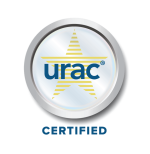Remote Patient Monitoring (RPM) is a healthcare delivery method that utilizes technology to enable patients to transmit health data to their healthcare providers remotely. This approach can provide cost-effective care, as it greatly decreases the necessity of in-person visits and hospitalizations.
As a healthcare provider (HCP) that offers an RPM Program, it is important to understand the ins and outs of remote patient monitoring reimbursement in order to get most out of your program. To maximize your return on investment (ROI), employ and take advantage of the tips stated in this article, which are: 1.) Research RPM reimbursement policies; 2.) Identify the right patients for RPM; 3.) Document your care and the outcomes; 4.) Know which CPT codes are crucial for RPM reimbursement; 5.) Enlist the services of an experienced and trusted RPM Provider
1. Research Remote Patient Monitoring Reimbursement Policies
Research is a critical step that you must make if you are planning to offer RPM services to your patients. Knowing the reimbursement policies, including those from the Centers for Medicare and Medicaid Services (CMS), can help you as a HCP make informed decisions on which RPM options to use and how to best implement them within your RPM services. Understanding CMS RPM reimbursement policies can help you determine which patients are eligible for RPM and how to properly document care and outcomes to maximize reimbursement.
When researching RPM reimbursement, you are encouraged to thoroughly examine the policies of your most frequent payers. Seeking the insight of industry experts and billing specialists is also recommended to ensure a successful navigation of the reimbursement process. Additionally, staying informed of new changes or updates to reimbursement policies is essential as they can potentially affect payments received for RPM services delivered.
2. Identify the Right Patients who would Benefit Most from RPM
To maximize your ROI in RPM, it is important to identify the right patients who will benefit from this type of care. The following are some of the factors to be considered when identifying the right patients for RPM:
- Chronic conditions: Patients with chronic conditions such as diabetes, hypertension, and congestive heart failure may benefit from remote monitoring due to the frequent need for monitoring and management of these conditions. Through implementing remote monitoring, patient healthcare utilization and costs can be reduced while also improving overall outcomes.
- Complex medical needs: Patients with complex medical conditions, such as post-surgical care or long-term chronic illnesses, may benefit from the implementation of remote monitoring. This technology allows HCPs to closely observe the patient’s condition and make timely adjustments to the treatment plan as needed.
- Patient preferences: It is essential to take into consideration the patient’s preferences and participation in remote monitoring. Some patients might feel more relaxed with this type of care, while others may opt for standard in-person visits. To ensure successful engagement and subsequent improved health outcomes and ROI, it is important that the patient is both willing and able to partake in the consistent use of remote monitoring.
3. Document Care and Outcomes
RPM can generate a significant ROI when its care and outcomes are properly documented. This can be beneficial in several ways:
- Improved patient outcomes: Through the documentation of care and outcomes, HCPs can accurately track the progress of their patients and adjust treatment plans as needed. Timely adjustments contribute to enhanced patient outcomes, reduced need for additional care, minimized healthcare costs, and maximized return on investment.
- Increased patient engagement: The documentation of care and tracking of outcomes can be instrumental in promoting patient engagement in their own health care journey. By providing regular updates on progress and encouraging active participation, providers can work to ensure that patients are adhering to treatment plans and achieving better results.
- Enhanced communication with patients: Maintaining detailed records of care and its outcomes can promote improved communication between healthcare providers and patients. By keeping patients apprised of their health care progress, providers can foster a trusting relationship, which may result in enhanced patient engagement and better outcomes.
- Demonstrated value: Documenting care and outcomes can also help to demonstrate the value of RPM to payers and other stakeholders. By providing data on patient outcomes and cost savings, providers can show the impact of remote monitoring on patient care and drive better reimbursement rates.
4. Know Which CPT Codes are Crucial for RPM Reimbursement
By using the correct CPT codes and properly documenting the services provided, you can maximize the ROI for RPM. The CPT codes 99453, 99454, 99457, and 99458 are used for the billing of RPM services, which involve the collection and interpretation of physiologic data from a patient at a remote location. To better understand the billing process, here is a brief overview of each code:
- CPT code 99453: This code is used to bill for RPM services that involve the initial setup and patient’s basic education on the proper usage of the RPM devices. It includes the installation of the RPM devices and the initial transmission of data from the device to the healthcare provider.
- CPT code 99454: This code is used to bill RPM services of one or more physiologic parameters, such as blood pressure, weight, pulse, respiratory flow rate, or oximetry. Each of these can be obtained by using a device that records healthcare data on a daily basis, and can transmit programmed alerts. This service is considered “initial,” meaning it is the first time the patient is receiving this type of remote monitoring. The service includes the supply of medical devices and lasts for a period of 30 days.
- CPT code 99457: This code is used to bill for RPM treatment management services given by a clinical staff member, physician, and/or other qualified healthcare professionals. This code is used when the RPM services involve interactive communication with a patient on a weekly basis and the initial 20 minutes of communication in a calendar month.
- CPT code 99458: This code is similar to CPT code 99457; however, it indicates at least an additional 20 minutes of interactive communication with the patient beyond the initial service. The use of this code may be appropriate in situations where a healthcare professional provides treatment management services to a patient through remote physiologic monitoring, and engages in interactive communication with the patient or caregiver for at least 20 additional minutes beyond the initial service.
To maximize the return on investment for Remote Physiological Monitoring Services, it is important to properly document the services provided and to follow coding and billing guidelines to ensure that you are accurately compensated for the care you provide.
5. Enlist the Services of an Experienced and Trusted RPM Provider
Healthcare organizations can maximize RPM reimbursement by working with RPM providers who have experience billing and negotiating with payers, and by staying up-to-date on the latest reimbursement policies and guidelines. It is also important to track program outcomes and utilize data analytics to demonstrate the value of the RPM program to payers and justify reimbursement.
By understanding RPM reimbursement and working with experienced RPM providers, healthcare organizations can maximize the ROI in an RPM program and improve patient outcomes.
DrKumo: A Trusted RPM Provider
DrKumo is a trusted provider of RPM services, and is dedicated to helping HCPs maximize their reimbursement opportunities. DrKumo has extensive experience in billing and negotiating with payers, as well as staying up-to-date on the latest reimbursement policies and guidelines. DrKumo has a team of experts who understand the intricacies of reimbursement across a variety of payers, including Medicare and Medicaid. They are also able to provide tailored advice to ensure that healthcare providers maximize their reimbursement opportunities.
In addition to helping with reimbursement, DrKumo is committed to helping HCPs take full advantage of the benefits offered by RPM. DrKumo can provide data analytics to help demonstrate the value of the RPM program to payers, as well as track program outcomes and improve patient outcomes. Additionally, they can provide advice on how to implement the best tactics to maximize reimbursement. These tactics include advice on how to set up the RPM system, how to manage patient data, and how to ensure compliance with payer policies.
Conclusion
To maximize reimbursement and ensure that you are adequately compensated for the care you have provided, it is essential to understand reimbursement policies, identify the right patients, document care and outcomes, and know which CPT codes are essential for RPM reimbursement. Additionally, enlisting the services of an experienced RPM provider, such as DrKumo, is essential for maximizing your ROI. By taking these steps, healthcare organizations can ensure that they are providing the best care to their patients and maximizing the benefits of RPM.
If you are a healthcare provider looking to have seamless RPM reimbursement and improve patient outcomes, contact DrKumo today for expert guidance and support.









